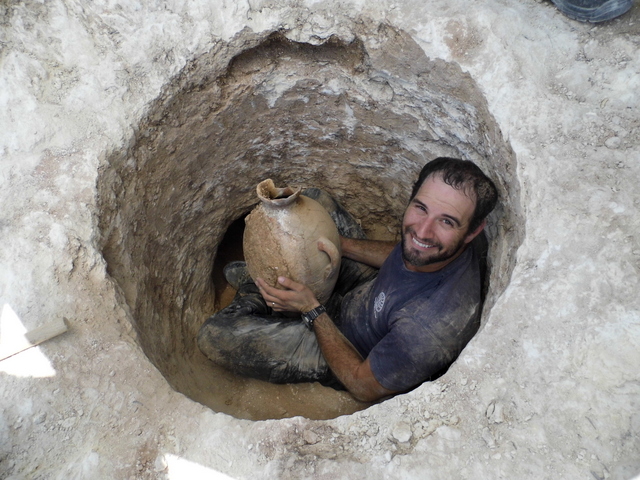.
The research, launched by the Israel Antiquities Authority in cooperation with academic institutions, also revealed evidence of cultivation of date palms and myrtle bushes

Why were decapitated toads placed in a jar in a 4,000-year-old tomb in Jerusalem? Fascinating findings from an Israel Antiquities Authority excavation near the Jerusalem Biblical Zoo shed light on burial customs in the Canaanite period (the Middle Bronze Age). The archaeological excavation, which took place in 2014 with funding from the Housing Ministry (the Arim Urban Development Company) prior to the expansion of the Mana?at neighborhood, yielded the remains of at least nine toads, and evidence of the cultivation of date palms and myrtle in the area.
In the new research, to be presented for the first time at the conference “New Studies in the Archaeology of Jerusalem and its Region,” remains that were found in vessels placed in the tomb as funerary offerings were examined. The examination, using advanced scientific methods, was a cooperative effort among various academic institutions, led by Shua Kisilevitz and Zohar Turgeman-Yaffe of the Israel Antiquities Authority, with Dr. Dafna Langgut of Tel Aviv’s Institute of Archaeology and Steinhardt Museum of Natural History, Dr. Lior Weisbrod of the Zinman Institute of Archaeology at the University of Haifa, Dr. David Ilan, director of the Nelson Glueck School of Biblical Archaeology at the Hebrew Union College and Nathan Ben-Ari of the Israel Antiquities Authority.
According to the excavation directors on behalf of the Israel Antiquities Authority, Shua Kisilevitz and Zohar Turgeman-Yaffe: “This section of the Nahal Repha’im basin was fertile ground for settlement throughout time, especially during the Canaanite period. In recent years excavations in the area have uncovered two settlement sites, two temples and a number of cemeteries, which provide new insight into the life of the local population at that time.” According to Kisilevitz and Turgeman-Yaffe: “For an archaeologist, finding tombs that were intentionally sealed in antiquity is a priceless treasure, because they are a time capsule that allows us to encounter objects almost just as they were originally left. At that time, it was customary to bury the dead with offerings that constituted a kind of “burial kit,” which, it was believed, would serve the deceased in the afterworld. When we removed the stone that blocked the tomb opening, we were excited to discover intact bowls and jars. In one of the jars, to our
surprise, we found a heap of small bones. The study of the bones, by Dr. Lior Weisbrod of the University of Haifa, revealed at least nine toads. Interestingly, they had been decapitated.” Another intriguing finding came to light through analysis of sediments collected from the clay jars and examined under a microscope. The examination, by Dr. Dafna Langgut of Tel Aviv University, revealed that shortly before the vessels were placed in the tomb, they came into contact with various plants including date palms and myrtle bushes. This fact is interesting because this is not the natural habitat for those species, and they therefore seem to have been planted here intentionally. According to Dr. Langgut, in this period the date palm symbolized fertility and rejuvenation, which could explain why the ancients cultivated the trees in this environment, where they do not grow naturally. According to the scholars, these plants may have been part of an orchard planted in an area where funeral rituals were held, during which offerings of food and objects were made to the deceased. The scholars surmise that the jar with the headless toads was among these offerings.
The research will be presented for the first time on Thursday, October 18, at the conference “New Studies in the Archaeology of Jerusalem and its Region,” open to the public, at the Hebrew University of Jerusalem.
Additional Articles ...